The
UGP Home Adventure Learning Kit was designed in response to the challenge of disseminating the workshop curriculum and extending the learning experience beyond the workshop setting, making the educational content accessible at home or in school, and thereby reinforcing concepts through hands-on/virtual activities.
Its design is flexible enough so that it can be adapted in at-home and workshop settings (both in-school or out-of-school), as it was intended to help children build linguistic and numeric literacy as well as to provide more embodied/multimodal opportunities to practice off screen.
Building Blocks
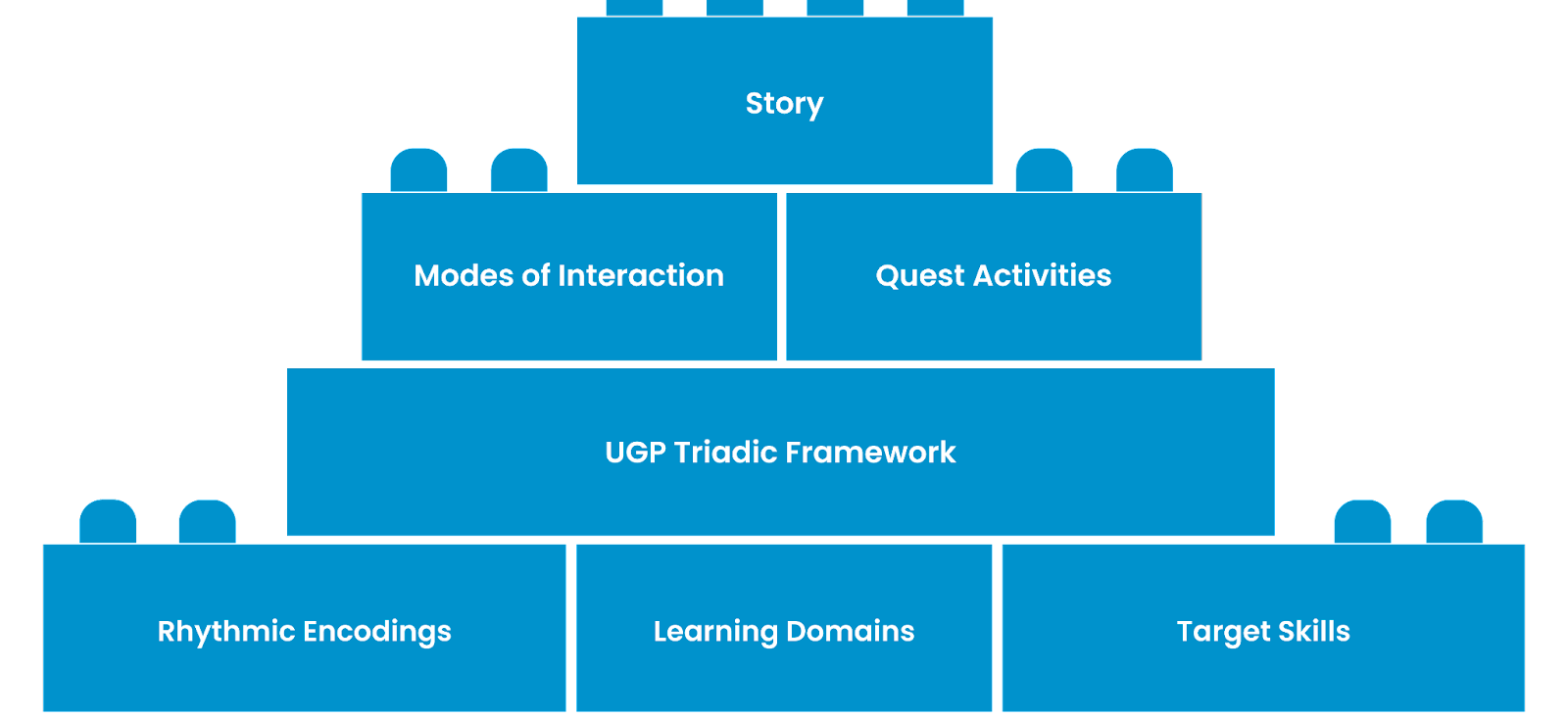
There are several building blocks that inform the design of the kit. These include the UGP Triadic Framework, the learning domains, modes of interaction, rhythmic encodings and target skills. Target Skills within our learning kit are twofold. On one hand, we have curriculum standards-based skills, which align with educational benchmarks and requirements for Early Childhood Education. On the other hand, the kit also emphasizes skills inherent from the modes of interaction through the UGP’s modalities and environments.
Story

The kit’s design system incorporates a unique “Transmedia Storytelling Framework”, wherein the educational journey is framed as a hybrid adventure, with the incorporation of an adventure map. This map serves as a visual and thematic guide, leading learners through a series of online or offline quests. Each point on the map represents a specific learning activity, thoughtfully crafted to engage learners by blending educational objectives with storytelling elements. Through this narrative approach, each step of the learning process becomes part of an overarching and exciting adventure to make the learning enjoyable.
Learning Domains
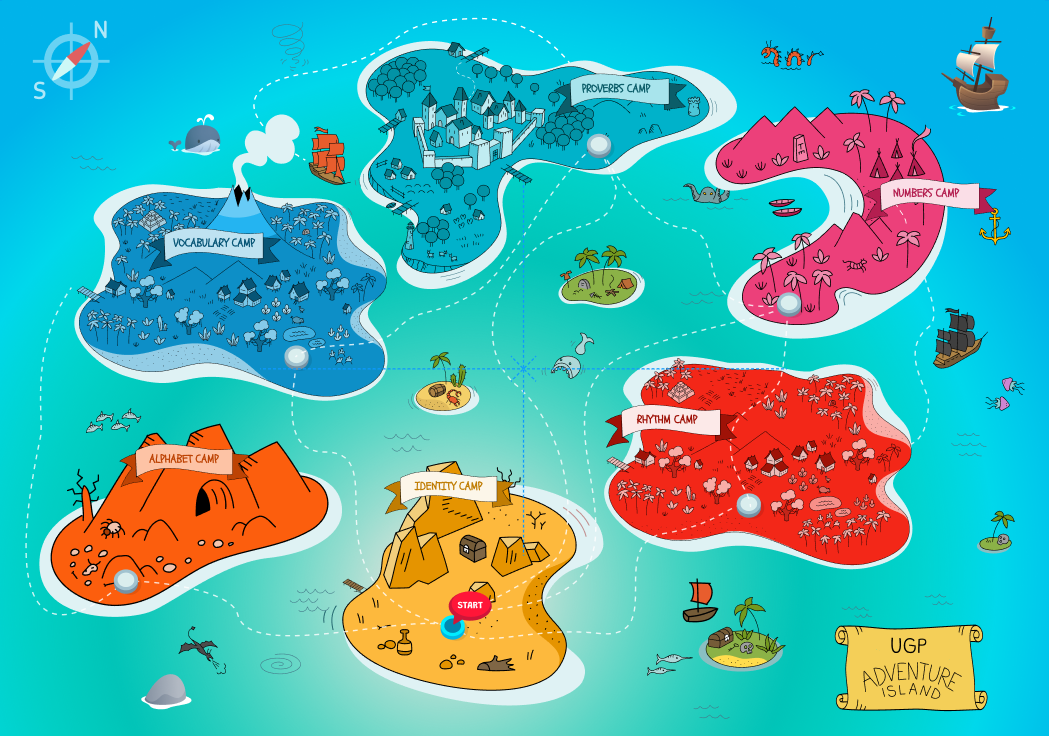
In the spirit of the adventure map concept, learning domains are depicted as distinct 'Camps' providing learners with a clear visual representation of their educational journey. These domains encompass key areas of literacy and numeracy, such as the alphabet, vocabulary, proverbs, and rhythm, which are translated into Alphabet Camp, Vocabulary Camp, Proverbs Camp, Numbers Camp, and Rhythm Camp. Additionally, the unique inclusion of Identity Camp foregrounds the concept of self-discovery and character development, setting the stage for learners to understand and craft their own identities as they embark on the educational adventure.
Triadic Framework
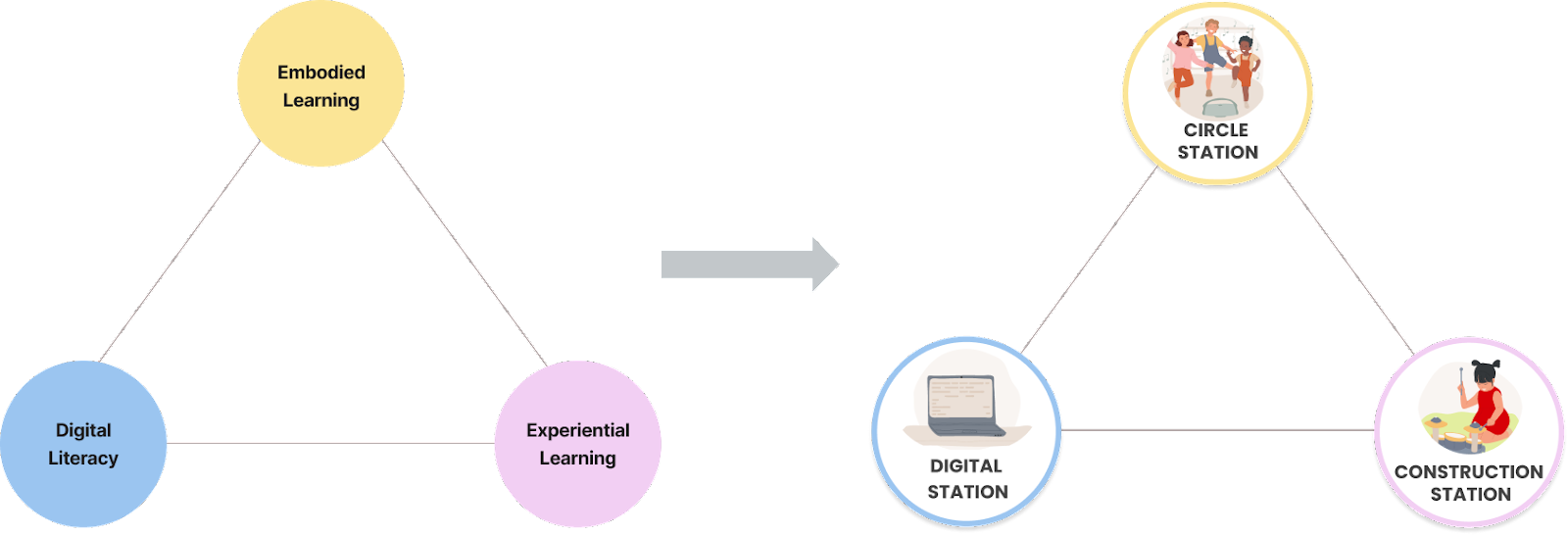
The Triadic Framework is operationalized within the Camps through a series of dedicated stations. Each station aligns with a component of the framework, offering focused learning activities. The Circle Station, representing embodied learning, emphasizes rhythm and movement. Digital literacy is the focus of the Digital Station, where interactive technology is the key tool. Finally, the Construction Station facilitates experiential learning through tactile, hands-on tasks.
Rhythmic Encodings
Alphariddims
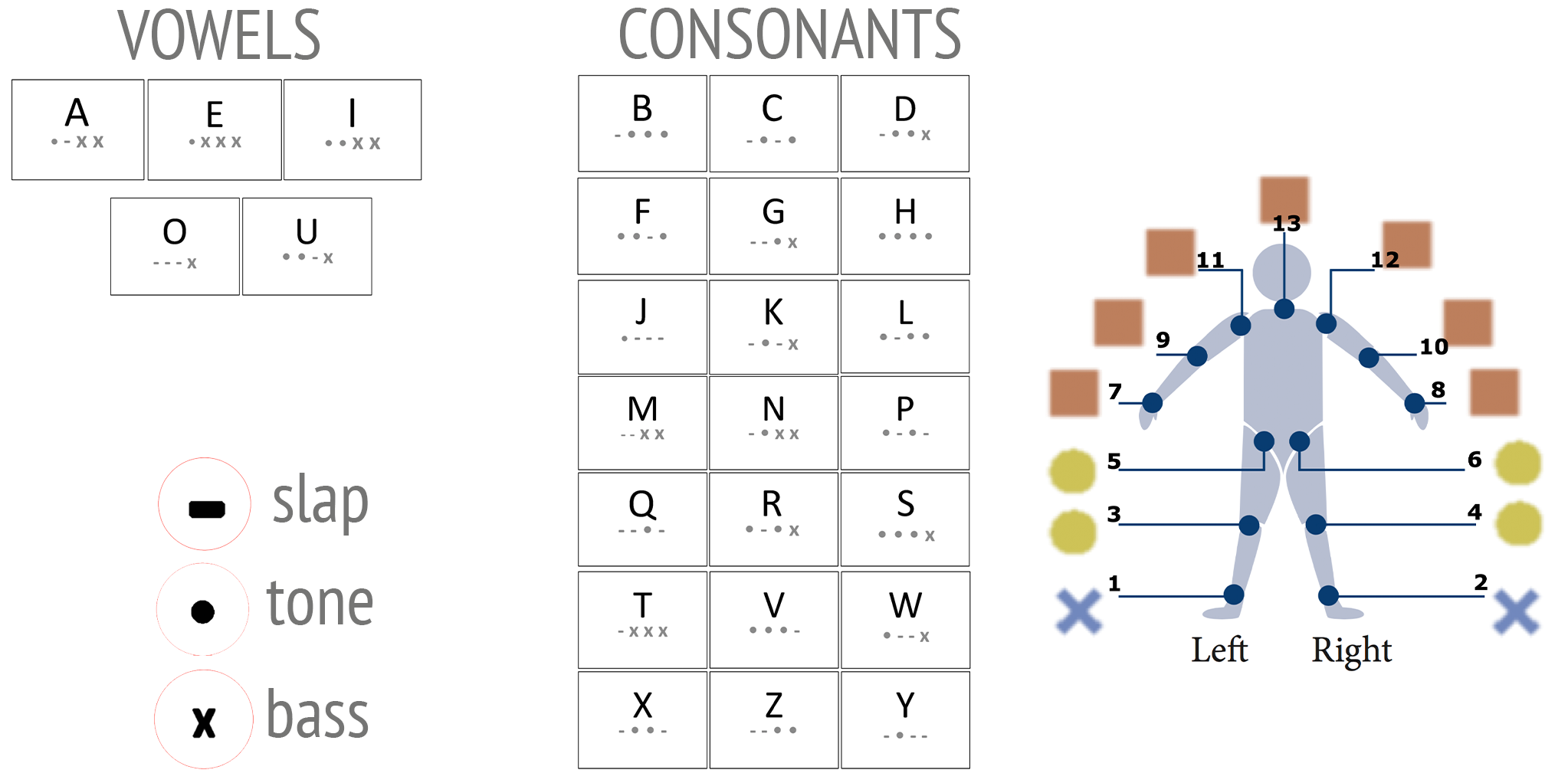 Numeriddims
Numeriddims
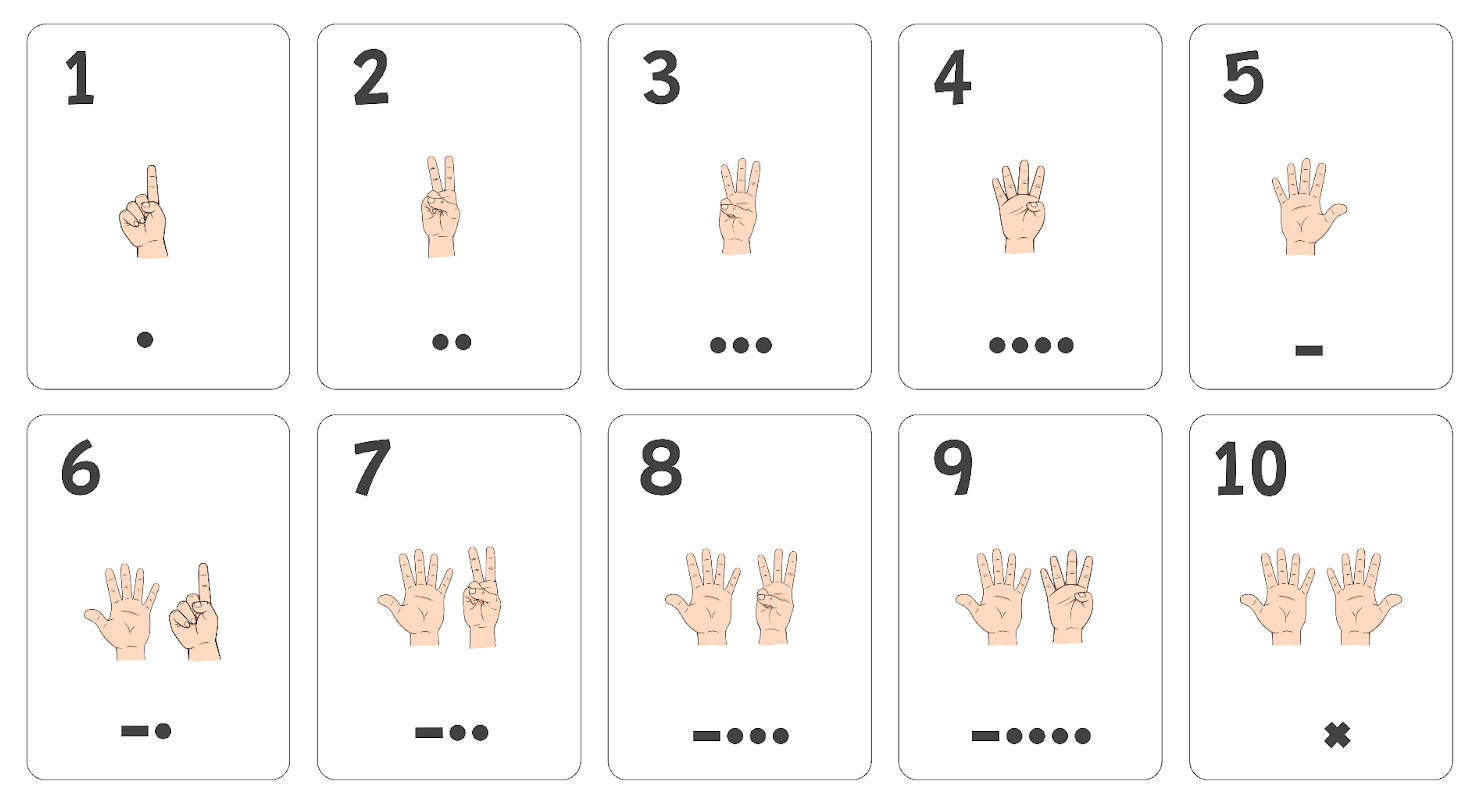
Rhythmic encodings are the systems devised to translate various elements, such as words, numbers, syllables, and shapes, into rhythmic patterns. Syllariddim encodes words, phrases, and sentences into rhythmic patterns based on their syllabic structure and associated stress type. It breaks down each word into syllables and then assigns a corresponding drum sound symbol depending on the type of stress the syllable has. Lastly, Numeriddim is the coding system dedicated to translating numbers into rhythms. It maps numbers 1, 5, and 10 to the symbols for tone, slap, and bass respectively.
Modes of Interaction
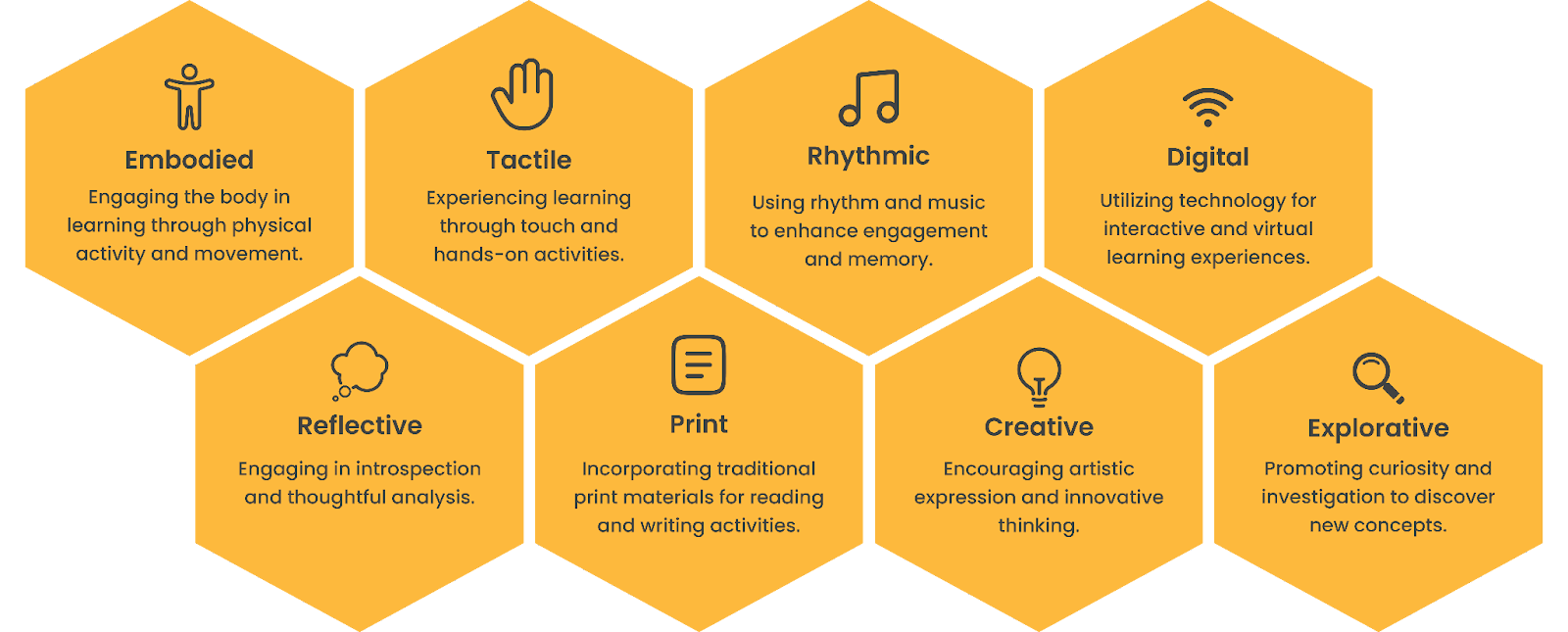
These refer to the various didactic methods and modalities through which learning is facilitated. This concept encompasses the different ways learners interact with content, each other, and their environment. It's about how information is delivered and experienced. They include: Rhythmic, Digital, Embodied, Print, Tactile, Creative, Explorative, and Reflective.
Quest Cards
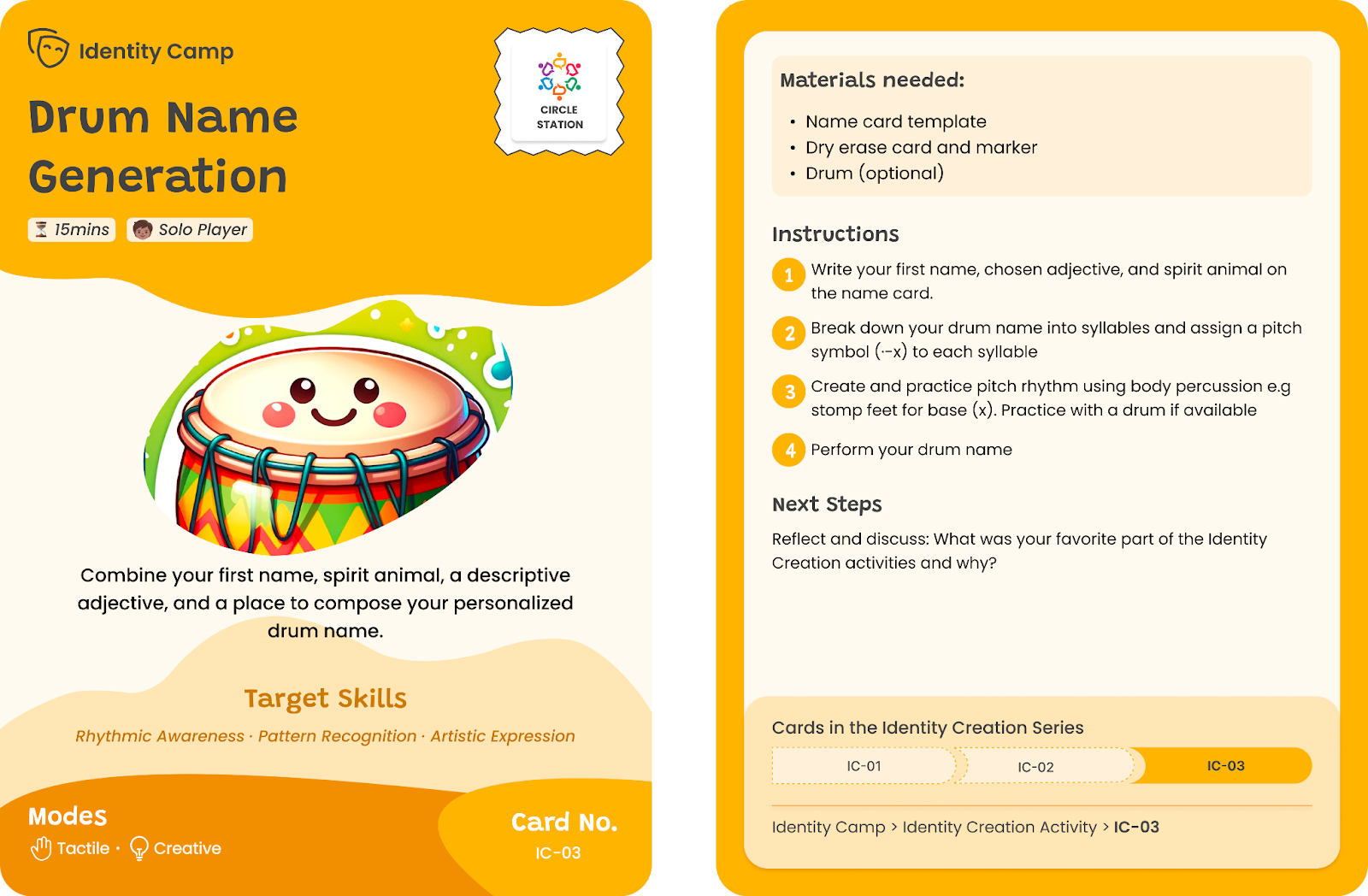
The Quest Cards are an essential component of the learning kit, designed to guide learners through each activity. The quest activities concept deconstructs the UGP curriculum into manageable, trackable mini-activities. As standalone facilitation aids, these cards are designed to provide all the necessary information required for successful adoption and use by parents and teachers. Anchored within the kit's structure, these 'Quest Activities' serve as interactive tasks aimed at helping learners acquire and practice the curriculum’s target skills within various domains. Each activity is presented through a 'Quest Card'—a tool that outlines the objectives of the task, lists the necessary materials, and provides step-by-step instructions. This systematic approach ensures that parents can easily understand and support their young learners' journey, promoting a sense of accomplishment and progression throughout their educational adventure.

 There are several building blocks that inform the design of the kit. These include the UGP Triadic Framework, the learning domains, modes of interaction, rhythmic encodings and target skills. Target Skills within our learning kit are twofold. On one hand, we have curriculum standards-based skills, which align with educational benchmarks and requirements for Early Childhood Education. On the other hand, the kit also emphasizes skills inherent from the modes of interaction through the UGP’s modalities and environments.
There are several building blocks that inform the design of the kit. These include the UGP Triadic Framework, the learning domains, modes of interaction, rhythmic encodings and target skills. Target Skills within our learning kit are twofold. On one hand, we have curriculum standards-based skills, which align with educational benchmarks and requirements for Early Childhood Education. On the other hand, the kit also emphasizes skills inherent from the modes of interaction through the UGP’s modalities and environments.

 In the spirit of the adventure map concept, learning domains are depicted as distinct 'Camps' providing learners with a clear visual representation of their educational journey. These domains encompass key areas of literacy and numeracy, such as the alphabet, vocabulary, proverbs, and rhythm, which are translated into Alphabet Camp, Vocabulary Camp, Proverbs Camp, Numbers Camp, and Rhythm Camp. Additionally, the unique inclusion of Identity Camp foregrounds the concept of self-discovery and character development, setting the stage for learners to understand and craft their own identities as they embark on the educational adventure.
In the spirit of the adventure map concept, learning domains are depicted as distinct 'Camps' providing learners with a clear visual representation of their educational journey. These domains encompass key areas of literacy and numeracy, such as the alphabet, vocabulary, proverbs, and rhythm, which are translated into Alphabet Camp, Vocabulary Camp, Proverbs Camp, Numbers Camp, and Rhythm Camp. Additionally, the unique inclusion of Identity Camp foregrounds the concept of self-discovery and character development, setting the stage for learners to understand and craft their own identities as they embark on the educational adventure.
 The Triadic Framework is operationalized within the Camps through a series of dedicated stations. Each station aligns with a component of the framework, offering focused learning activities. The Circle Station, representing embodied learning, emphasizes rhythm and movement. Digital literacy is the focus of the Digital Station, where interactive technology is the key tool. Finally, the Construction Station facilitates experiential learning through tactile, hands-on tasks.
The Triadic Framework is operationalized within the Camps through a series of dedicated stations. Each station aligns with a component of the framework, offering focused learning activities. The Circle Station, representing embodied learning, emphasizes rhythm and movement. Digital literacy is the focus of the Digital Station, where interactive technology is the key tool. Finally, the Construction Station facilitates experiential learning through tactile, hands-on tasks.


 These refer to the various didactic methods and modalities through which learning is facilitated. This concept encompasses the different ways learners interact with content, each other, and their environment. It's about how information is delivered and experienced. They include: Rhythmic, Digital, Embodied, Print, Tactile, Creative, Explorative, and Reflective.
These refer to the various didactic methods and modalities through which learning is facilitated. This concept encompasses the different ways learners interact with content, each other, and their environment. It's about how information is delivered and experienced. They include: Rhythmic, Digital, Embodied, Print, Tactile, Creative, Explorative, and Reflective.
 The Quest Cards are an essential component of the learning kit, designed to guide learners through each activity. The quest activities concept deconstructs the UGP curriculum into manageable, trackable mini-activities. As standalone facilitation aids, these cards are designed to provide all the necessary information required for successful adoption and use by parents and teachers. Anchored within the kit's structure, these 'Quest Activities' serve as interactive tasks aimed at helping learners acquire and practice the curriculum’s target skills within various domains. Each activity is presented through a 'Quest Card'—a tool that outlines the objectives of the task, lists the necessary materials, and provides step-by-step instructions. This systematic approach ensures that parents can easily understand and support their young learners' journey, promoting a sense of accomplishment and progression throughout their educational adventure.
The Quest Cards are an essential component of the learning kit, designed to guide learners through each activity. The quest activities concept deconstructs the UGP curriculum into manageable, trackable mini-activities. As standalone facilitation aids, these cards are designed to provide all the necessary information required for successful adoption and use by parents and teachers. Anchored within the kit's structure, these 'Quest Activities' serve as interactive tasks aimed at helping learners acquire and practice the curriculum’s target skills within various domains. Each activity is presented through a 'Quest Card'—a tool that outlines the objectives of the task, lists the necessary materials, and provides step-by-step instructions. This systematic approach ensures that parents can easily understand and support their young learners' journey, promoting a sense of accomplishment and progression throughout their educational adventure.